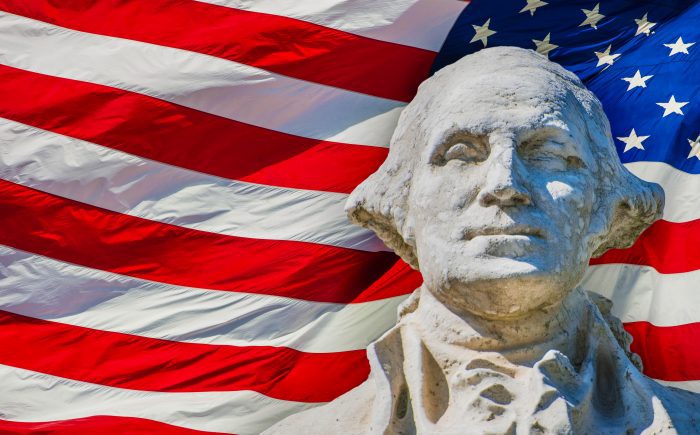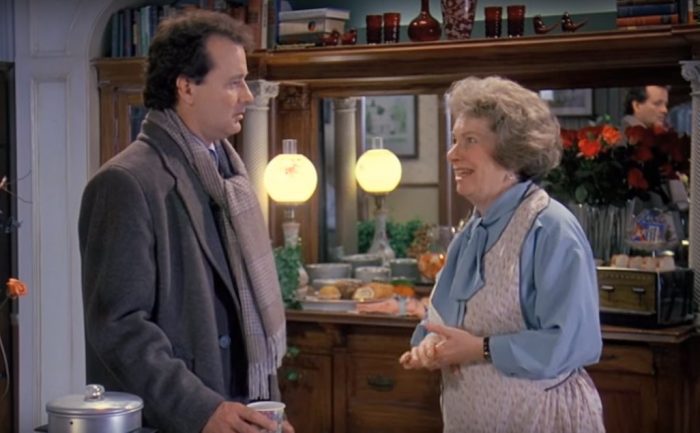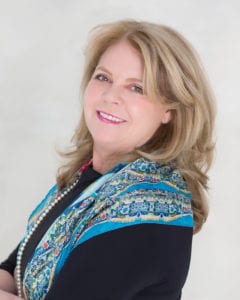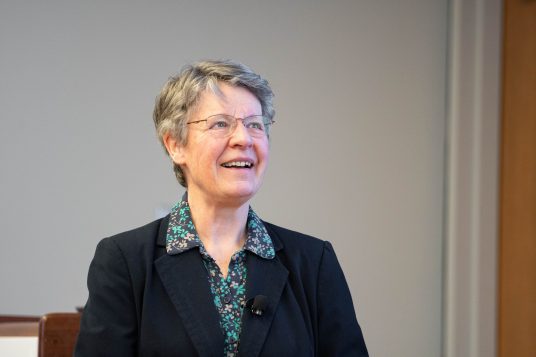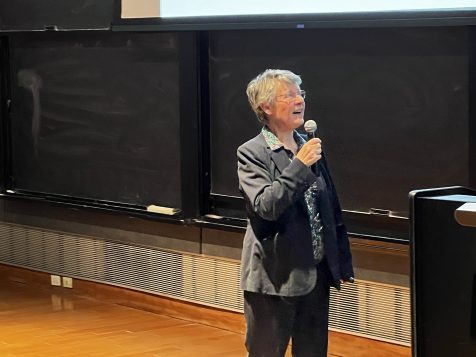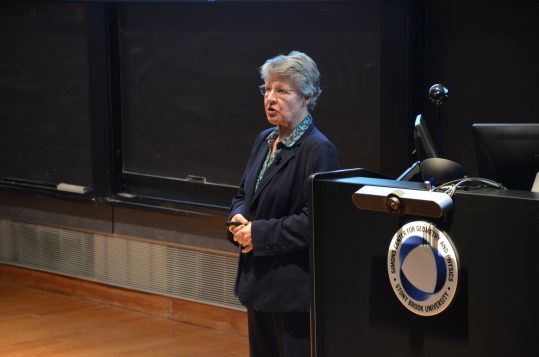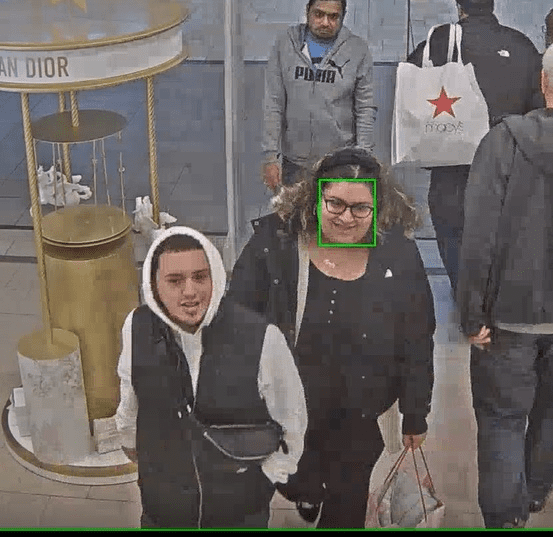1 of 31
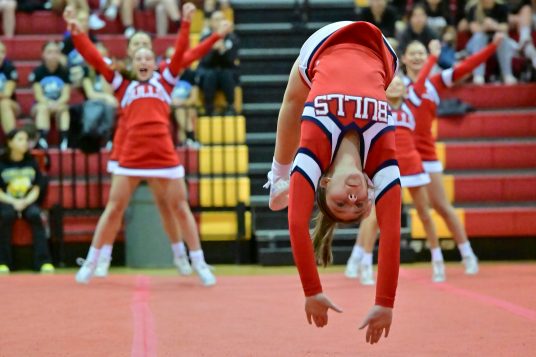
Smithtown East competes in the Suffolk County Class A county finals at Sachem East High School Saturday, Feb. 17. Photo by Bill Landon
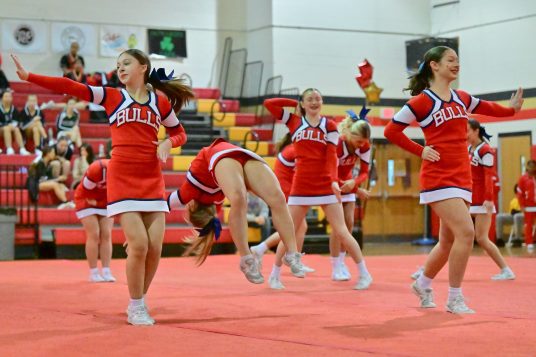
Smithtown East competes in the Suffolk County Class A county finals at Sachem East High School Saturday, Feb. 17. Photo by Bill Landon
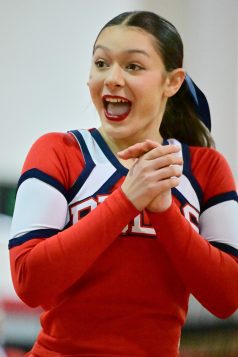
Smithtown East competes in the Suffolk County Class A county finals at Sachem East High School Saturday, Feb. 17. Photo by Bill Landon
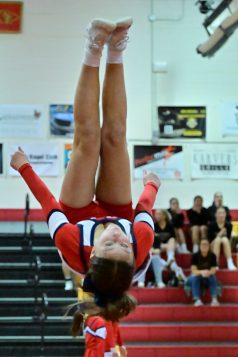
Smithtown East competes in the Suffolk County Class A county finals at Sachem East High School Saturday, Feb. 17. Photo by Bill Landon
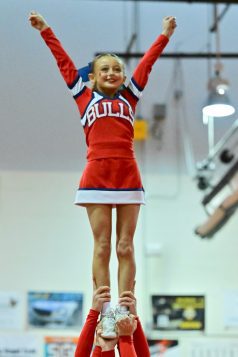
Smithtown East competes in the Suffolk County Class A county finals at Sachem East High School Saturday, Feb. 17. Photo by Bill Landon
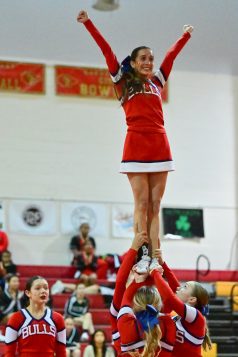
Smithtown East competes in the Suffolk County Class A county finals at Sachem East High School Saturday, Feb. 17. Photo by Bill Landon
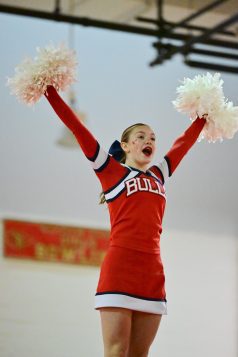
Smithtown East competes in the Suffolk County Class A county finals at Sachem East High School Saturday, Feb. 17. Photo by Bill Landon
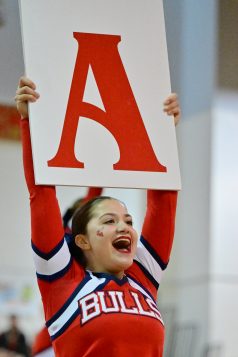
Smithtown East competes in the Suffolk County Class A county finals at Sachem East High School Saturday, Feb. 17. Photo by Bill Landon
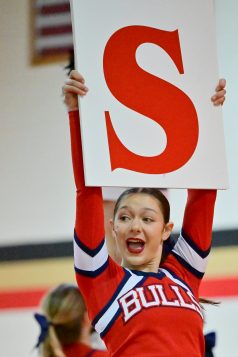
Smithtown East competes in the Suffolk County Class A county finals at Sachem East High School Saturday, Feb. 17. Photo by Bill Landon
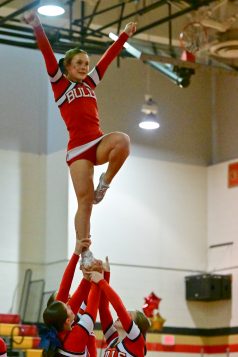
Smithtown East competes in the Suffolk County Class A county finals at Sachem East High School Saturday, Feb. 17. Photo by Bill Landon

Ward Melville cheerleading team wins the Section XI coed crown at the county finals Feb. 17. Photo by Bill Landon
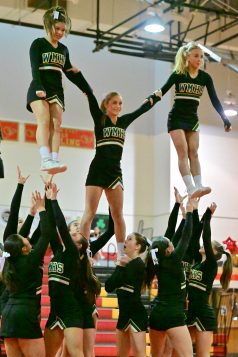
Ward Melville cheerleading team wins the Section XI coed crown at the county finals Feb. 17. Photo by Bill Landon
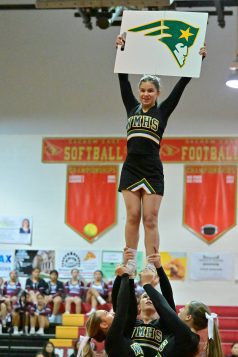
Ward Melville cheerleading team wins the Section XI coed crown at the county finals Feb. 17. Photo by Bill Landon
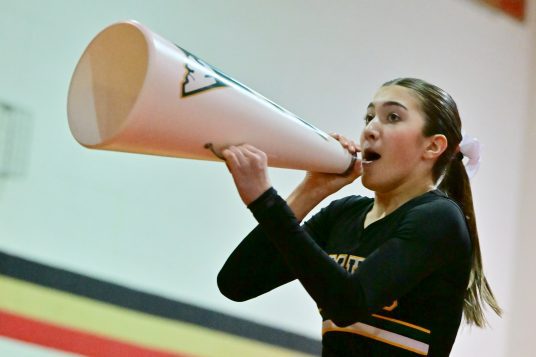
Ward Melville cheerleading team wins the Section XI coed crown at the county finals Feb. 17. Photo by Bill Landon
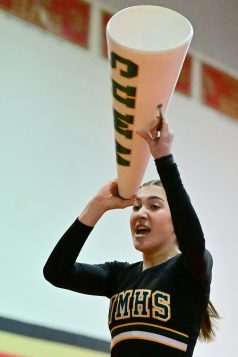
Ward Melville cheerleading team wins the Section XI coed crown at the county finals Feb. 17. Photo by Bill Landon

Ward Melville cheerleading team wins the Section XI coed crown at the county finals Feb. 17. Photo by Bill Landon
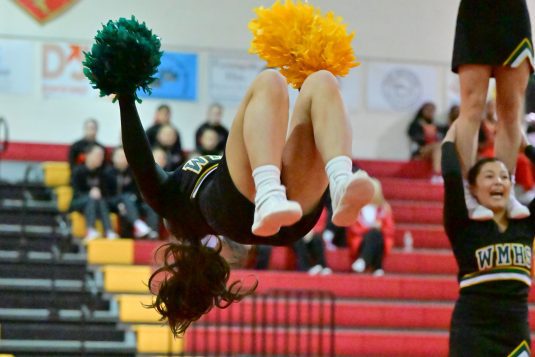
Ward Melville cheerleading team wins the Section XI coed crown at the county finals Feb. 17. Photo by Bill Landon
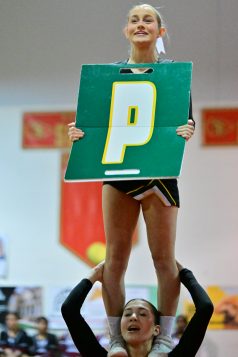
Ward Melville cheerleading team wins the Section XI coed crown at the county finals Feb. 17. Photo by Bill Landon
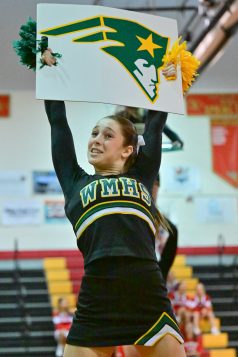
Ward Melville cheerleading team wins the Section XI coed crown at the county finals Feb. 17. Photo by Bill Landon
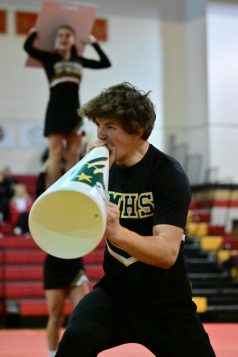
Ward Melville cheerleading team wins the Section XI coed crown at the county finals Feb. 17. Photo by Bill Landon
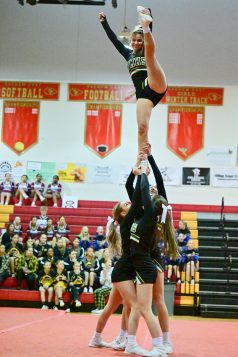
Ward Melville cheerleading team wins the Section XI coed crown at the county finals Feb. 17. Photo by Bill Landon

Centereach cheerleading competes in the Suffolk County Class A county finals at Sachem East High School Saturday, Feb. 17. Photo by Bill Landon
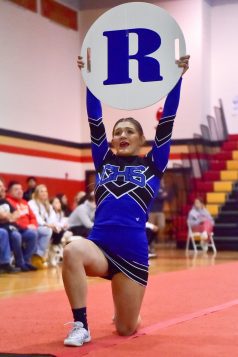
Centereach cheerleading competes in the Suffolk County Class A county finals at Sachem East High School Saturday, Feb. 17. Photos by Bill Landon
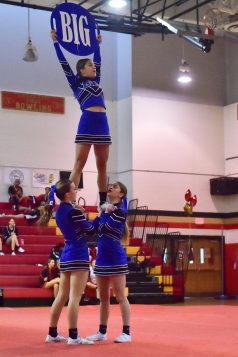
Centereach cheerleading competes in the Suffolk County Class A county finals at Sachem East High School Saturday, Feb. 17. Photos by Bill Landon
By Bill Landon
It was the elite 11 cheerleading teams who made it to the Suffolk County finals at Sachem East High School Saturday, Feb. 17, in the Class A and coed competitions looking to punch their ticket to the state championship round next month.
Centereach High School team dazzled the fans in their 2 1/2 minute routine followed by Commack in front of a capacity crowd. Smithtown East took to the mat for their time in the spotlight in a spirited routine clearly happy with their performance.
Ward Melville stole the show in the coed division with an inspiring demonstration scoring 92.6 to capture the Section XI crown and with it will make the journey to the Visions Veterans Memorial Arena in Binghamton for the state finals March 2.

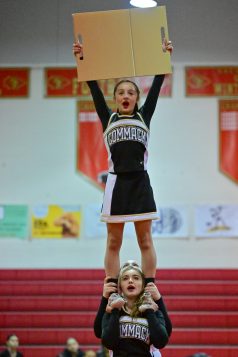
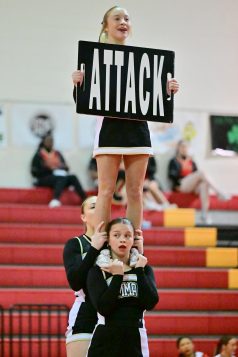
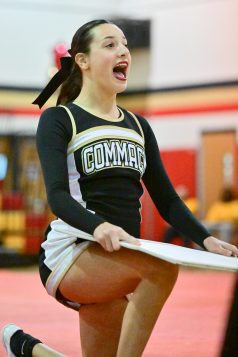
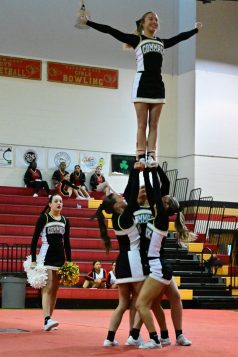

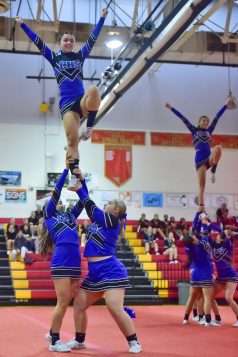
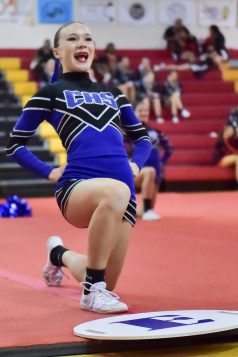
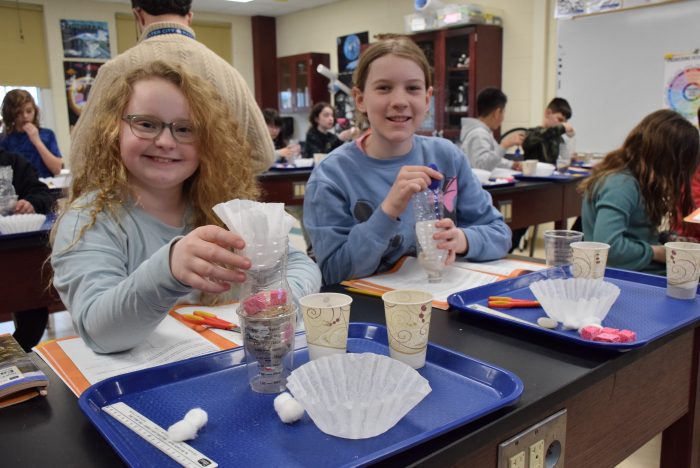
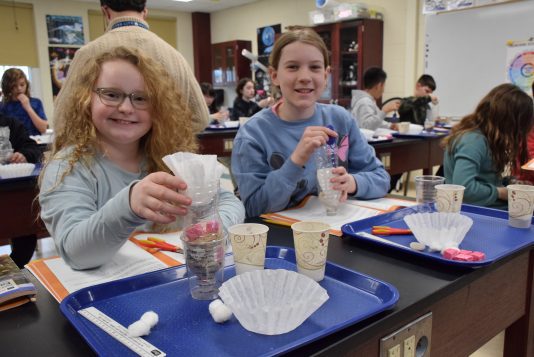
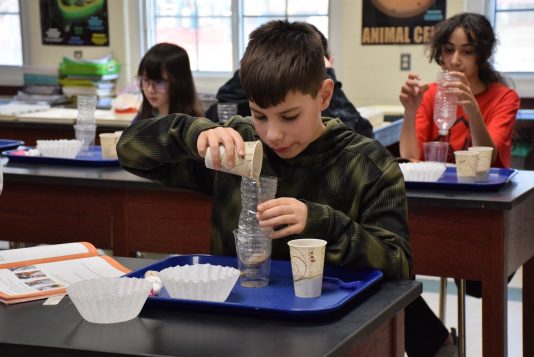
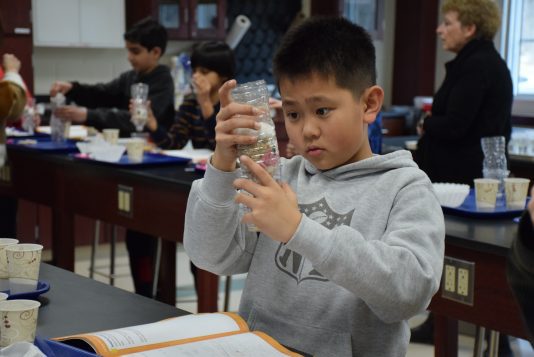

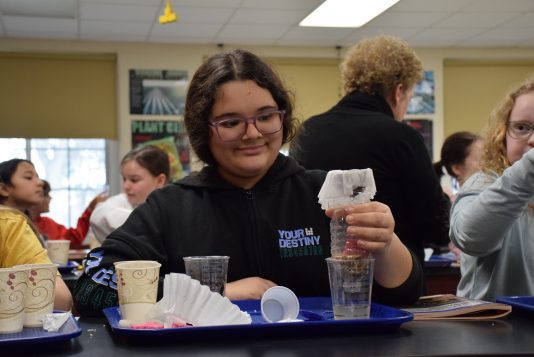
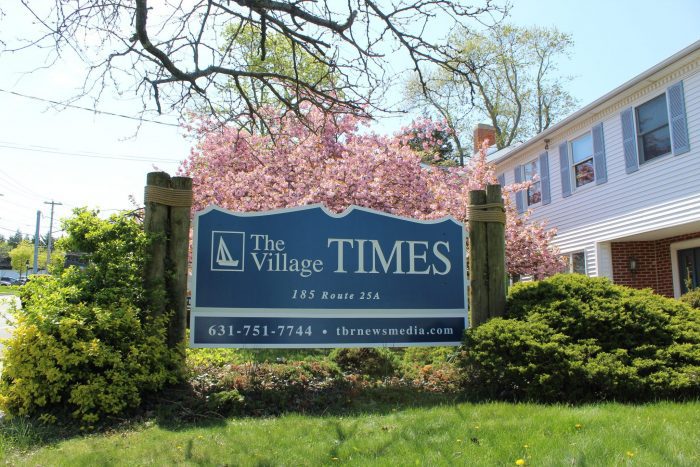
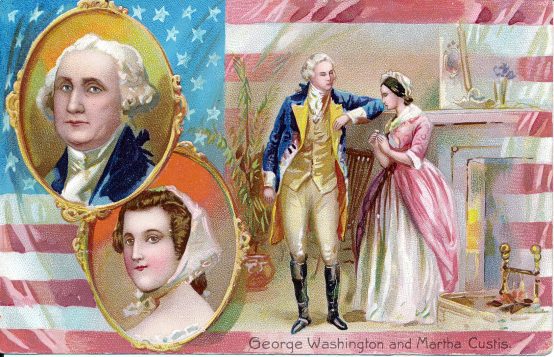
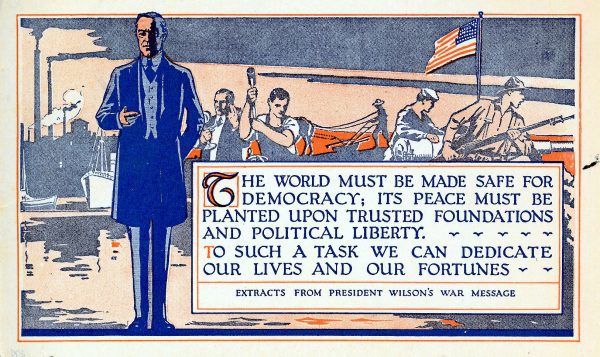
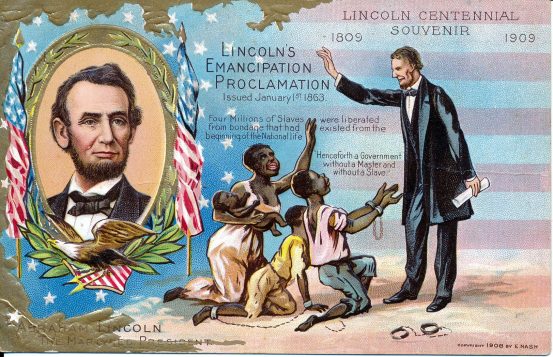
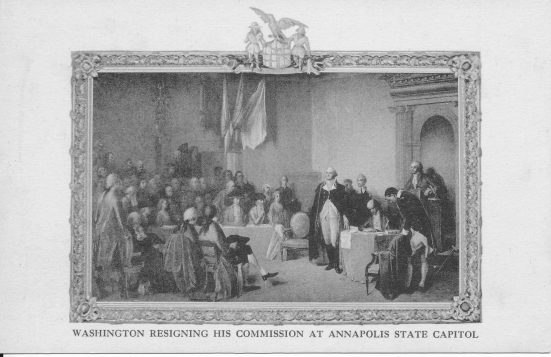
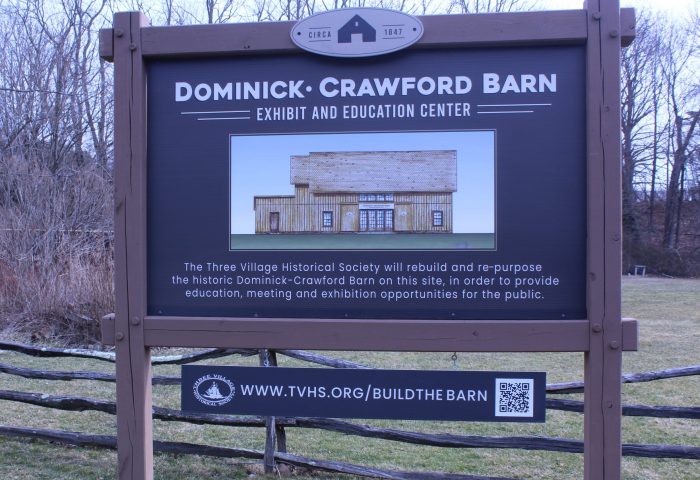
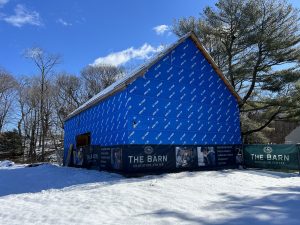 Setauket’s historic district shouldn’t be marked by a bright-blue-wrapped, half-finished barn for much longer, as the Three Village Historical Society plans to start working in earnest on the Dominick-Crawford Barn Education and History Center just as soon as the weather thaws and their supply orders come in.
Setauket’s historic district shouldn’t be marked by a bright-blue-wrapped, half-finished barn for much longer, as the Three Village Historical Society plans to start working in earnest on the Dominick-Crawford Barn Education and History Center just as soon as the weather thaws and their supply orders come in.